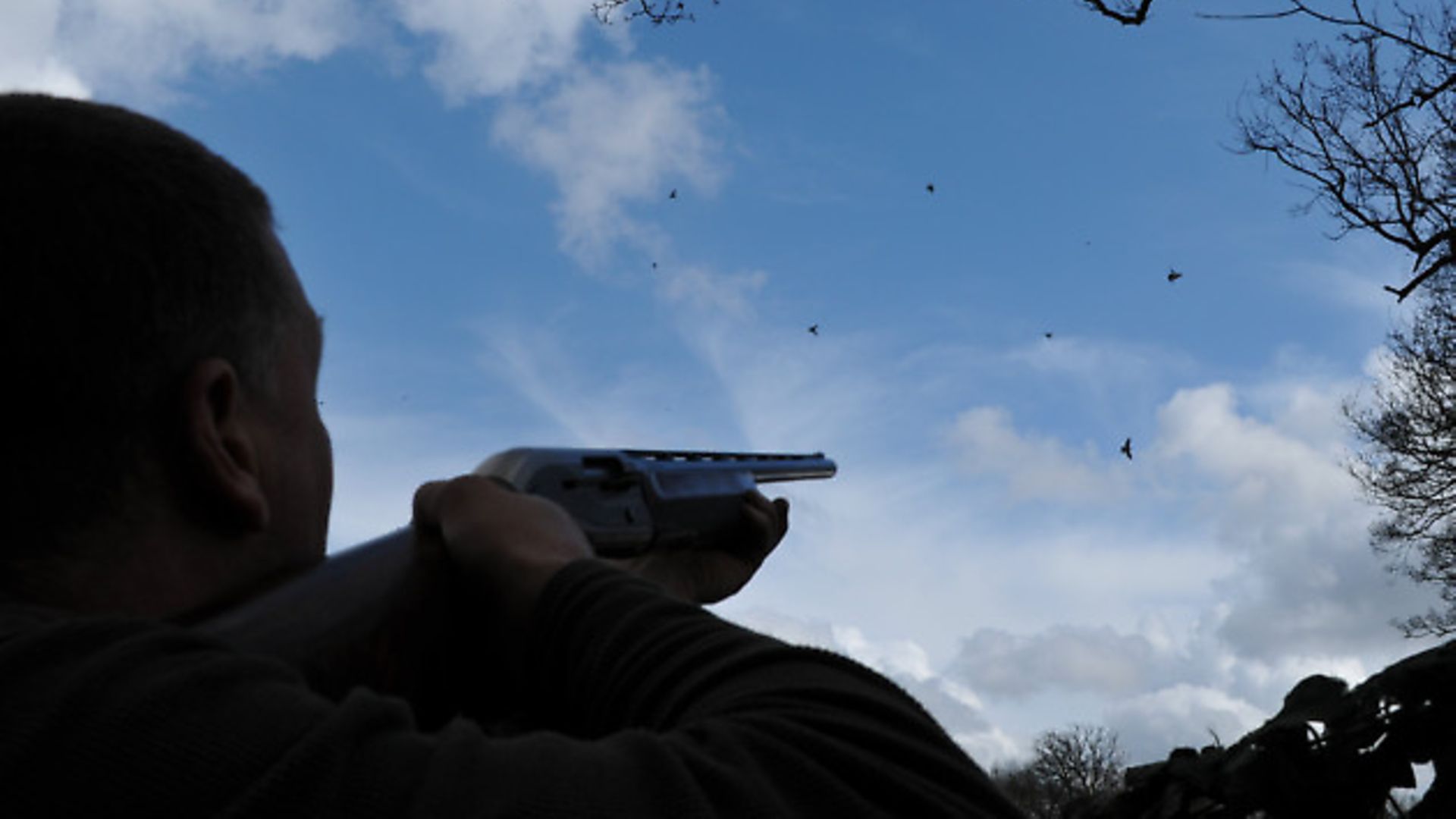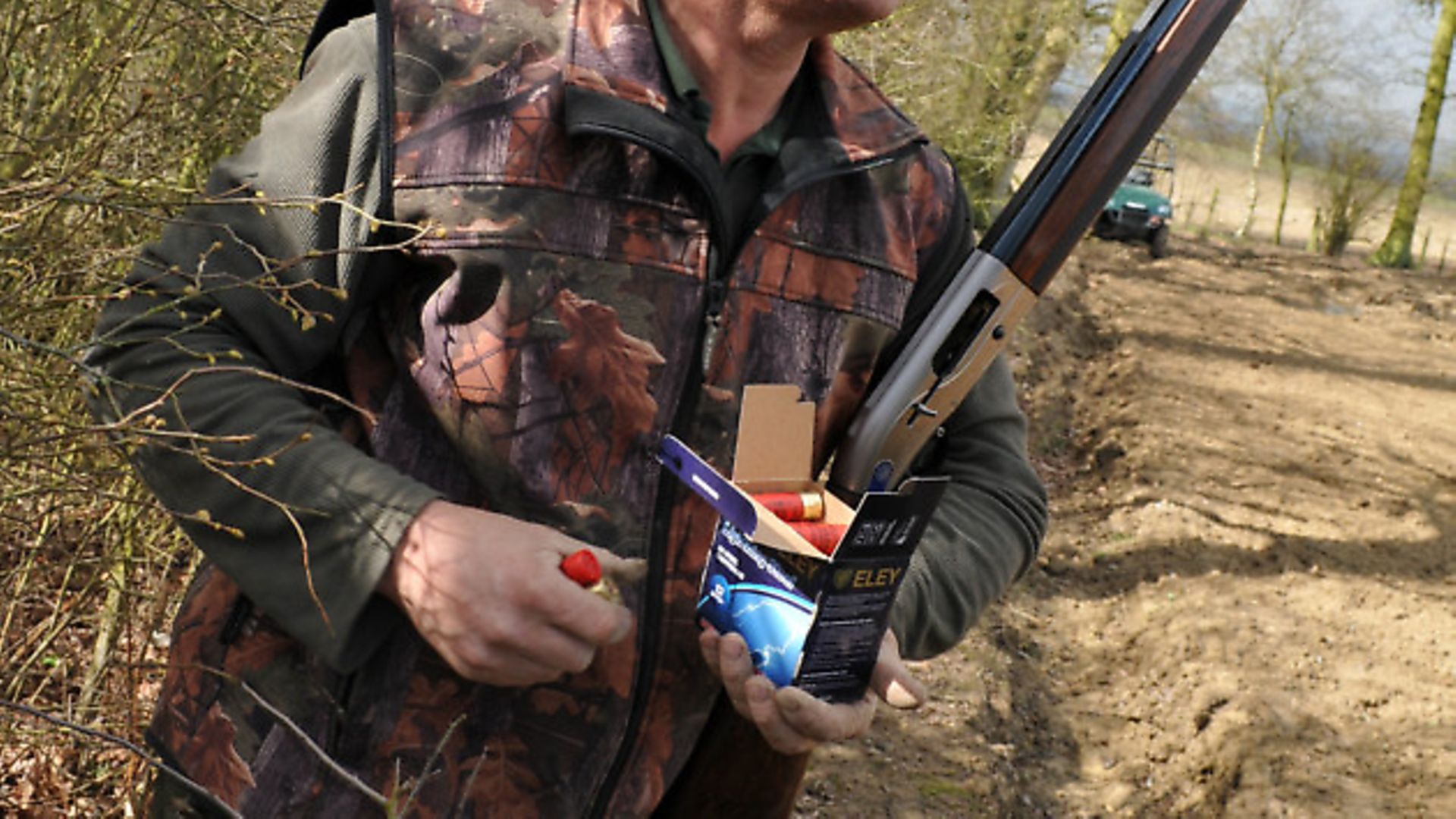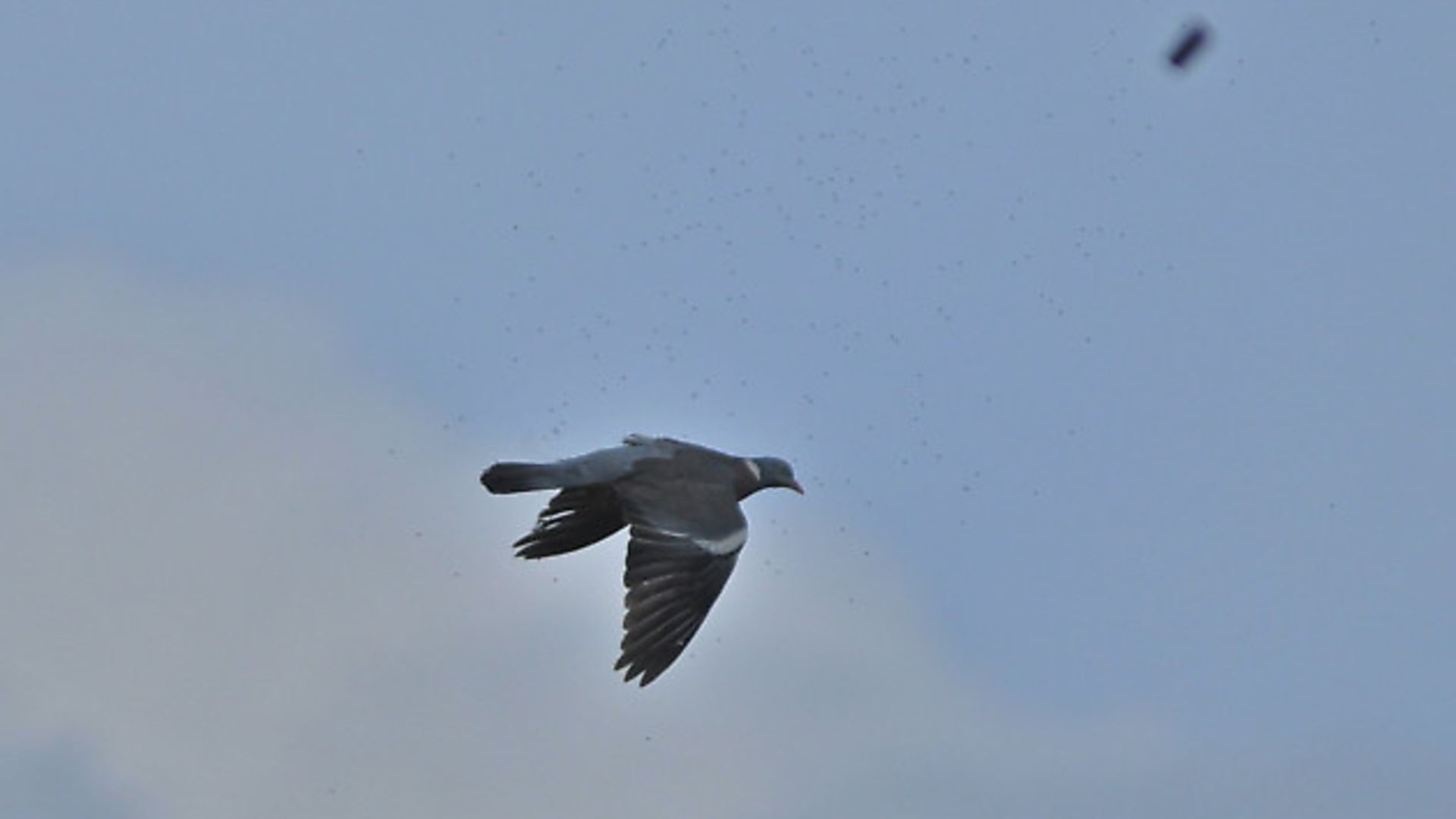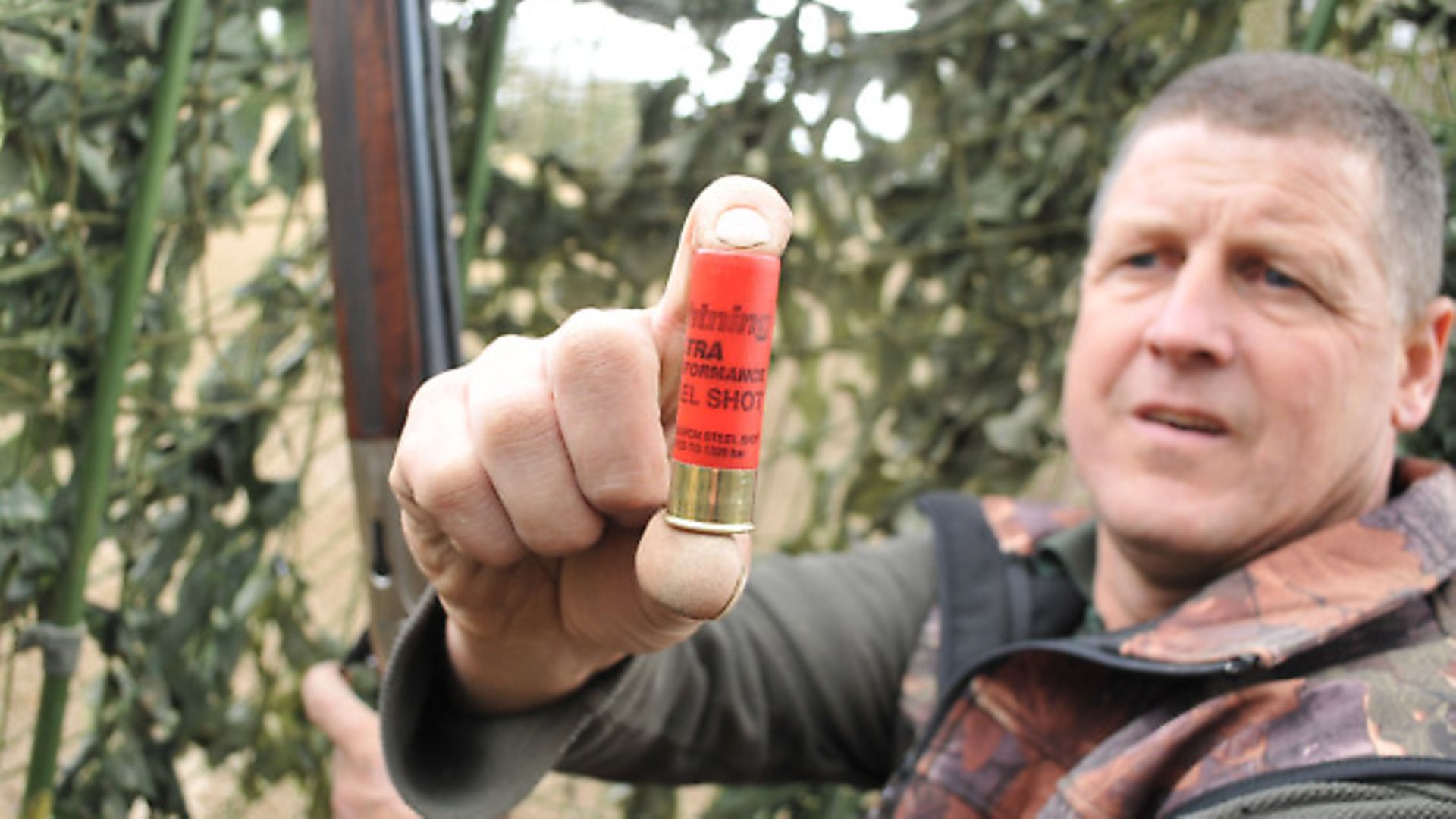It has been a wet and cold start to the season, but the action – and the weather – looks to be heating up on Crowman’s farm
 credit: Archant
credit: Archant
It’s not often that Andy Crow doesn’t look forward to shooting pigeons. But as he trudges across the claggy morass of his new pea crop, muttering darkly to himself, I sense he is not thrilled to be entertaining Sporting Shooter this afternoon. Only a dozen or so blue-grey shapes can be seen in the trees. Dark clouds gather on the horizon. Things don’t look great.
 credit: Archant
credit: Archant
But Crowman is a gent of the first order and he doesn’t like to let down his loyal readers, so he throws out a few decoys, sets up a hide in the shade of the hedgerow and fires up the whirly.
 credit: Archant
credit: Archant
“I don’t usually bother with a whirly when shooting over drillings, but I dunno today. It’ll look good in the pictures. Get down!” I duck, Andy crams a shell into his Beretta and the first pigeon of the day hits the earth before we make it into the hide. Andy shoots me a quizzical look. “He looked like he wanted to get here pretty badly, didn’t he?!”
 credit: Archant
credit: Archant
It doesn’t take long to realise that the first bird was no fluke. There might not be thousands of pigeons on the place, but ones, twos and threes are making a beeline for the field and decoying better than Andy has seen for months. The birds can be seen folding up literally hundreds of yards away and heading for the whirly to drop straight in to the pattern.
Instead of the few half-hearted ‘dummy’ pictures Andy anticipated while he reminisced about better times, this looks like it might have the making of an exciting couple of hours.
Two more birds fold up, hop the hedge and glide in to be greeted by a suddenly reinvigorated Crowman and his deadly Beretta. Then another bombs over the trees from behind, banks and comes in for a second – and final – look.
There is no doubt that the weather has made everything that bit later this year. Last year we shot over drilled peas in late March wearing T-shirts. This year it is mid-April wearing thermals!
The implications of the wet winter and prolonged cold spell through March can be clearly seen in the neighbouring field. “In fact, this bit of drilling was rape but the crop had failed so I ploughed it in and started again,” explains Andy.
We walk over to the other side of the field and the rape plants are barely recognisable. Stunted little things, stripped of leaves and many missing their flowering heads altogether. “This is what they should look like,” says Andy crossing to beneath a nearby tree. For some reason, the plants here are untouched and the difference is staggering. “These are vigorous plants, 18” tall already – if the field was like this, it would be beyond the pigeons now. But because the crop is so far behind, they can still get in and land to feed, no problem. It’s going to be hard work getting decent yields here.”
Back in the hide and the action remains consistent. Barely any big flocks flood in but often there will be a single, then another, then a trio, all in close succession. Sometimes Andy shoots one of a small group and the others do a circuit before trying to get back into the pattern.
“I’m starting to wish we had headed over earlier. I seriously can’t remember the last time the birds were so committed. Almost every one is decoying.” The wind lightens and the sky clears considerably, making the hide a mild and suddenly good-natured place.
The wet spring means that a lot of farms have drilled all their crops at the same time as they have been so far behind schedule. “There are over 1,000 acres of drillings just around me – that means that the pigeons have plenty of options in terms of places to go to. The fear is that a few bangs will scare them off. But because they are coming in dribs and drabs, we might be OK.”
We have a look in a few crops and most contain beans rather than peas. “These are a different variety of bean to the one I am sowing, so they have clearly been feeding elsewhere. Yet they know these peas are here and are heading back in for a late feed. With drillings – as with acorns – it is easy to get a crop full of high value food. They know they can feed late and still get a decent meal.”
We have said before how well modern drills get the seed into the ground. Free offerings are generally limited to the headlands where the tractors turn around and if the birds are there in numbers then the field will soon be cleared. “Mind you, if the whether is warm it won’t be long before the birds are back on the young plants.
“Peas really are a pigeon shooter’s friend and offer lots of opportunities for shooting throughout the growing season.” Given that these peas wouldn’t even be here but for the bad weather, perhaps Andy is seeing a potential silver lining for that particular cloud!
The action continues until after 7pm, by which time the bag is over 80 birds – not bad for three hours’ shooting when nobody really fancied setting up in the first place! “It just goes to show that you can never be sure how it’ll pan out. If you hadn’t been coming with the camera, I wouldn’t have bothered going at all. As it happens, the birds have decoyed brilliantly and we’ve had some great sport.
I was surprised just how effective the whirly was today, as often it can spook the birds on drillings. Again, a lesson in trusting your instincts and being flexible when required.”
N.B. A few days later, Andy returned to the same field with a friend and they bagged almost 400 birds between them!
Lightning fast Eleys
We took a few boxes of Eley’s new ultra high performance steel shells along for Andy to try out – The Eley Lightning Steel. He has used both VIP Steel and VIP Bismuth loads for wildfowling in the past and found them to perform well. For pigeons, though, he is very particular. Above all, the shell must be fast.
Eley’s blurb tells us that the Lightning Steels use purpose-made Maxam powders to help them achieve speeds of 1640fps – yet still staying within the CIP pressure guidelines to ensure gun safety and optimum performance.
“The loads I usually use are a very fast cartridge and I can tell pretty quickly whether or not I’ll get on with a different brand. From the first shot these felt spot on. They are every bit as fast – if not a touch faster – than my standard load and they have been knocking down some seriously long birds today, no problem.
“If I was looking for a shell to use on the foreshore, or for duck drives on the pheasant shoots I attend, these would be the ones I’d take. The only thing I would say is that I do sometimes find that steel shot leaves you with the odd runner where it passes through the bird. Lead and Bismuth offer better knock-down ability in my view. But when you have a dog on hand to retrieve them, it’s not a major problem, and of course the law states that for duck and geese you must use steel anyway.”
Bear in mind, also, that your gun needs the Fleur de Lys proof mark if you plan to use high performance steel rounds such as these.
Available in a 3” case, in UK shot sizes 1, 3 and 5 and in 32 or 36g payloads, the Eley Lightning Steel is on sale now at gunshops across the country. Visit www.eleyhawkltd.com for more information.
By Dom Holtam